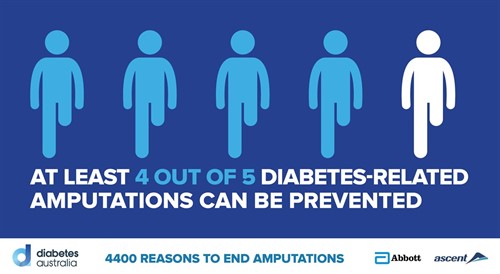People with diabetes usually see their optometrist for eye examinations which detect changes that may lead to diabetic retinopathy and vision loss if not treated. Now here’s another reason why diabetes patients should see their optometrist – they can help prevent foot amputations.
Research by optometrist Professor Nathan Efron and his talented team from Queensland University of Technology has found that optometrists can use equipment called Optical Coherence Tomography (OCT) machines to detect early nerve damage – diabetic neuropathy - in limbs.

Practitioners can then alert doctors and patients to this nerve damage so measures can be implemented to limit it and prevent it from progressing to ulcers and ultimately amputation.
Ulcers and amputations are bad news for diabetes patients with 12 Australians every day undergoing a diabetes-related amputation, according to Diabetes Australia. More than 4,400 mostly preventable amputations occur annually, and 10,000 hospital admissions occur a year for diabetes-related foot ulcers.
"The leading cause of amputations is foot ulcers from diabetic neuropathy but optometrists can help prevent this by detecting early signs when looking at a patient’s eyes," Professor Efron said. "The main role optometrists have in diabetes patients is to screen for diabetic eye disease but they can extend their scope of practice to detect diabetic nerve damage to limbs.
"About 50 per cent of diabetes patients experience diabetic nerve damage - diabetic peripheral neuropathy (DPN) - at some level with symptoms including numbness, tingling or pain in the arms and legs," he said.
"One of the main complications is losing nerve sensation in the feet and patients with numbness may tread on something hot or sharp and injure their foot, without realising. If they are unaware of foot trauma this can develop into an ulcer and may eventually require amputation."
"Optometrists already use OCTs in diabetes patients to examine the retina - the nerve layer at the back of your eye that senses light and sends images to your brain. They can use OCTs to detect thinning of nerve fibres in the retina."
He said thinning of the retinal nerve fibre layer was a signal that the person could have nerve damage elsewhere in their body including the arms and legs.
"Our research shows that retinal nerve fibre thinning is a very early marker of loss of fine nerve fibres around the body occurring at the same time as in the eye. Loss of fine nerve fibres in the feet could lead to loss of sensation," he said.
Professor Efron is speaking about the topic at an optometry conference in WA this weekend, March 30-31, 2019.
To find your local optometrist to book an eye examination go here.





